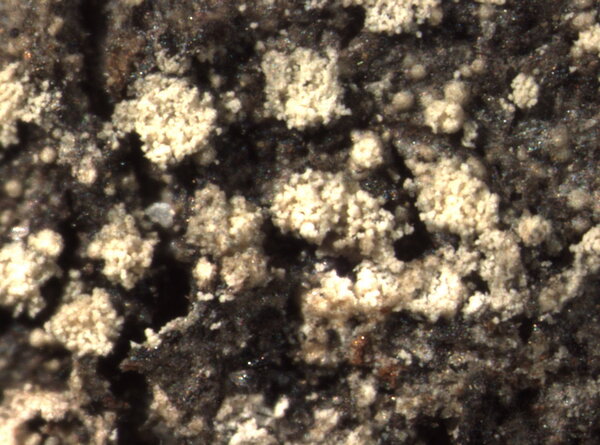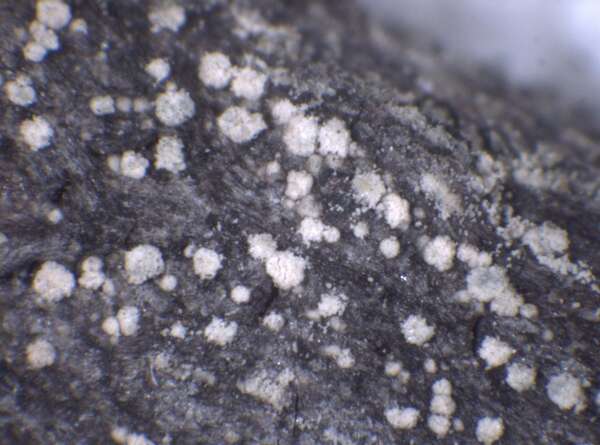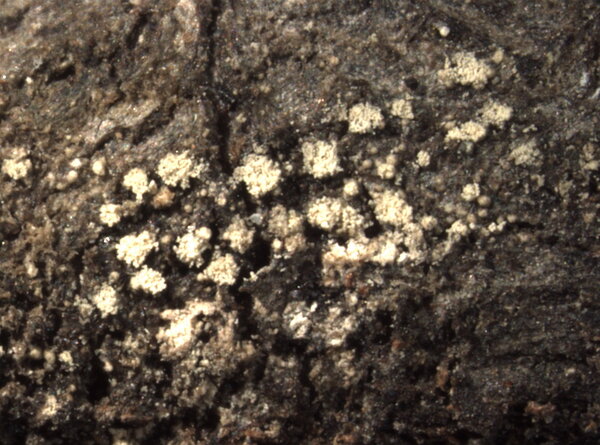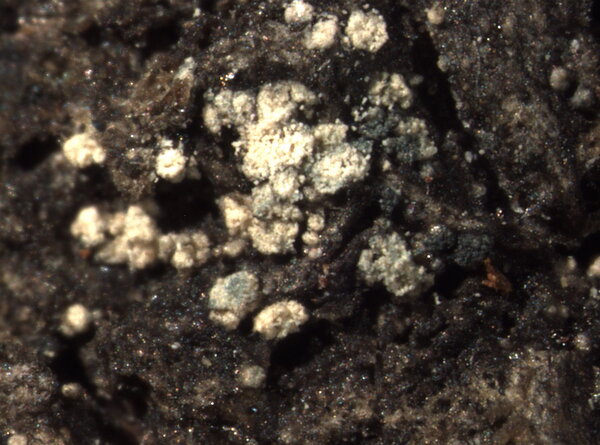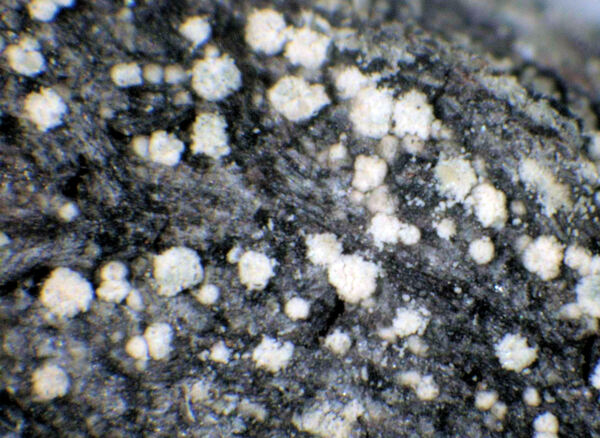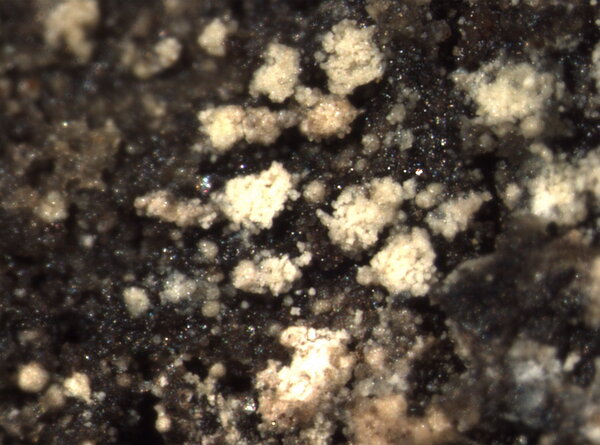Micarea coppinsii Tønsberg
Sommerfeltia, 14: 215, 1992
Synonyms:
Distribution:
Description: Thallus crustose, areolate, forming up to 2 cm wide, rounded patches, without a distinct prothallus, consisting of discrete, rounded, convex, grey-green to grey, 0.04-0.22(-0.3) mm wide areoles bursting apically into green to blue-grey, 0.1-0.2 mm wide soralia with farinose, 12-25(-30) µm thick soredia, some of them with blue-green hyphae reacting K-, N+ red. Apothecia very rare, micareoid, 0.1-0.2 mm across, whitish to blue-grey, at first adnate and weakly marginate but soon convex, immarginate, constricted at base or short-stalked. Proper exciple thin but usually evident in young apothecia, colourless; epithecium scarcely differentiated from the hymenium; hymenium colourless in lower part, greenish to blue-green in upper part, 45-70 µm high, C+ reddish KC+ red, the pigmented parts K-, N+ red; paraphyses conglutinated, branched and anastomosing; hypothecium colourless. Asci 8-spored, clavate to cylindrical-clavate, with an unstained wall and a K/I+ blue outer layer and apical dome, the latter with a non-amyloid, cylindrical axial mass. Ascospores 3-septate, hyaline, fusiform to fusiform-clavate, more or less curved, 20-28(-31) x 4(-5) µm. Pycnidia rare, pale, c. 0.07 mm wide. Microconidia narrowly fusiform to subcylindrical, 4.5-6 x 0.6-0.8 µm. Photobiont micareoid, the cells 4-7 µm wide. Spot tests: thallus K-, C+ faintly red, KC+ red, P-, UV-; soralia C+ orange to orange-red. Chemistry: 5-O-methylhiascic acid (major), gyrophoric acid and sometimes traces of lecanoric acid.Note: on bark of various trees and on branches of dwarf shrubs, more rarely on wood or on siliceous rocks, in sites with an oceanic climate, therefore most common in Western Europe, with a few records from the Eastern and Central Alps, outside the Italian territory; to be looked for in the Italian Alps.
Growth form: Crustose
Substrata: rocks, bark, and lignum
Photobiont: green algae other than Trentepohlia
Reproductive strategy: mainly asexual, by soredia, or soredia-like structures (e.g. blastidia)
Most common in areas with a humid-warm climate (e.g. most of Tyrrenian Italy)
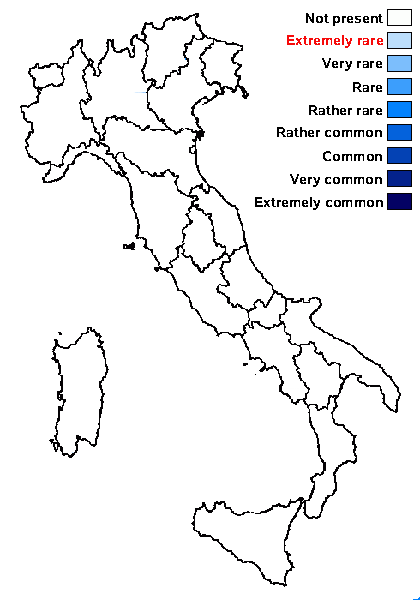
Predictive model
Growth form: Crustose
Substrata: rocks, bark, and lignum
Photobiont: green algae other than Trentepohlia
Reproductive strategy: mainly asexual, by soredia, or soredia-like structures (e.g. blastidia)
Most common in areas with a humid-warm climate (e.g. most of Tyrrenian Italy)

Predictive model
 Index Fungorum
Index Fungorum
 GBIF
GBIF
